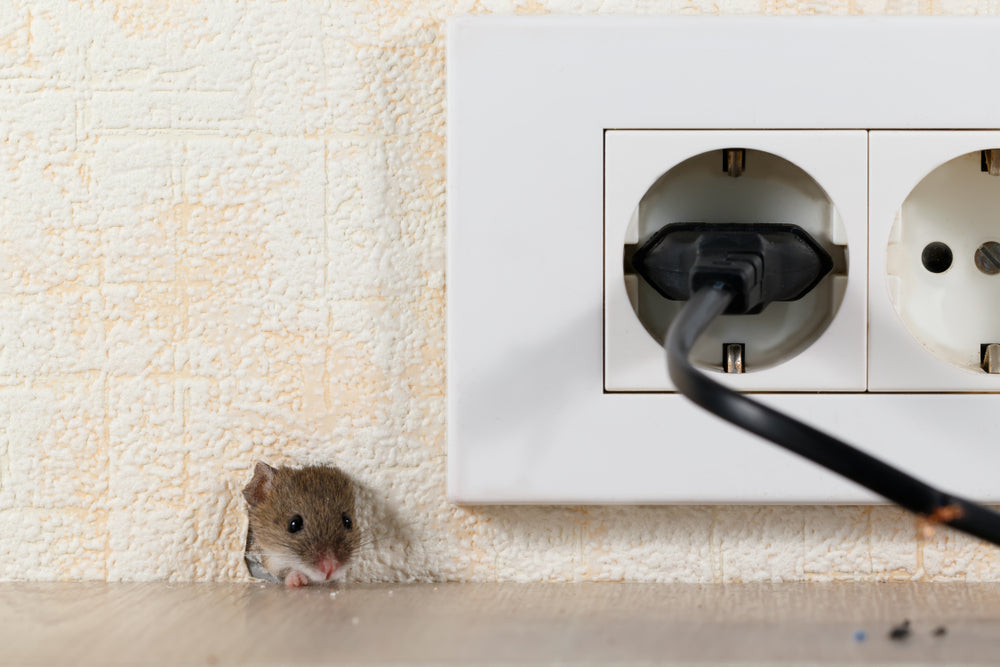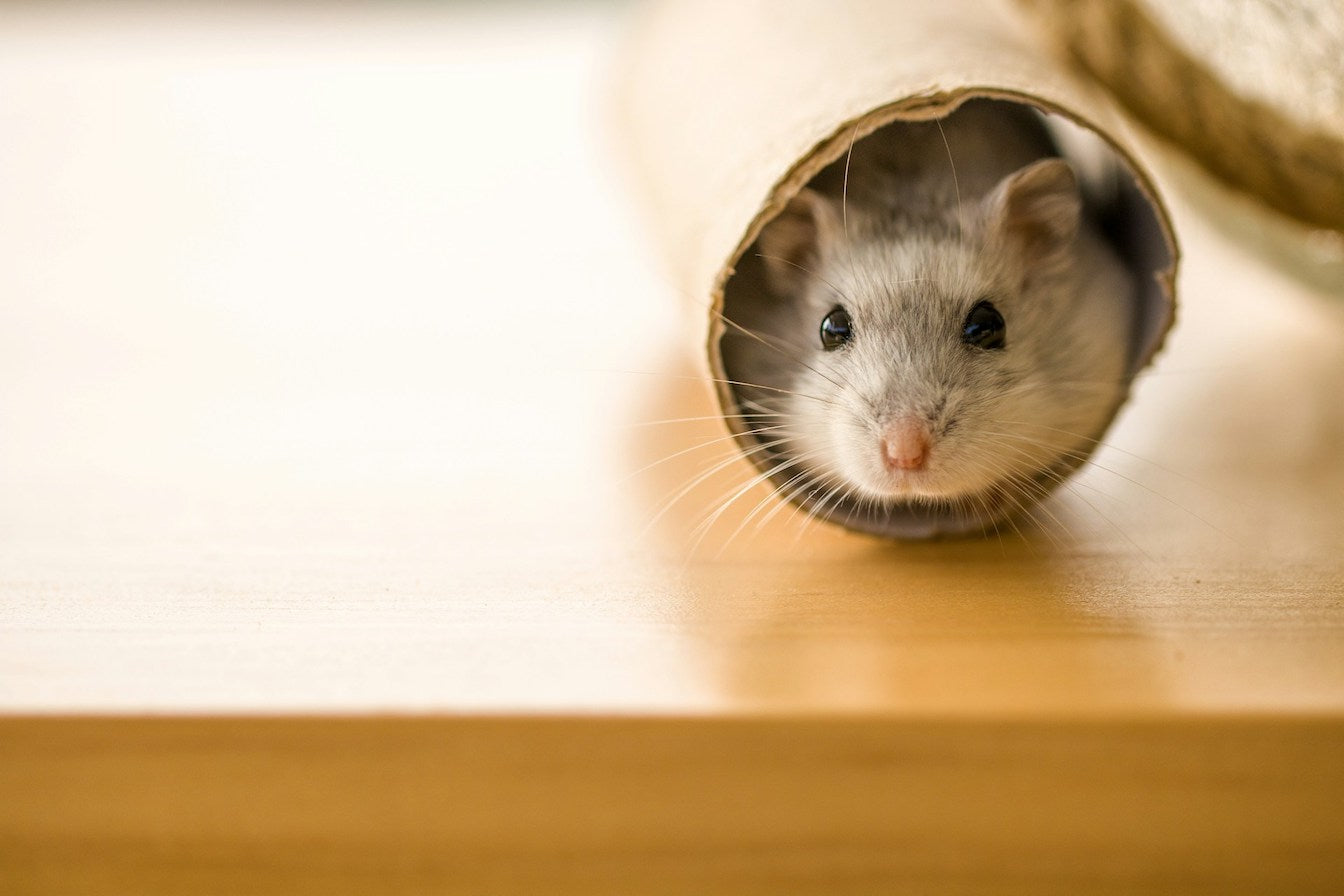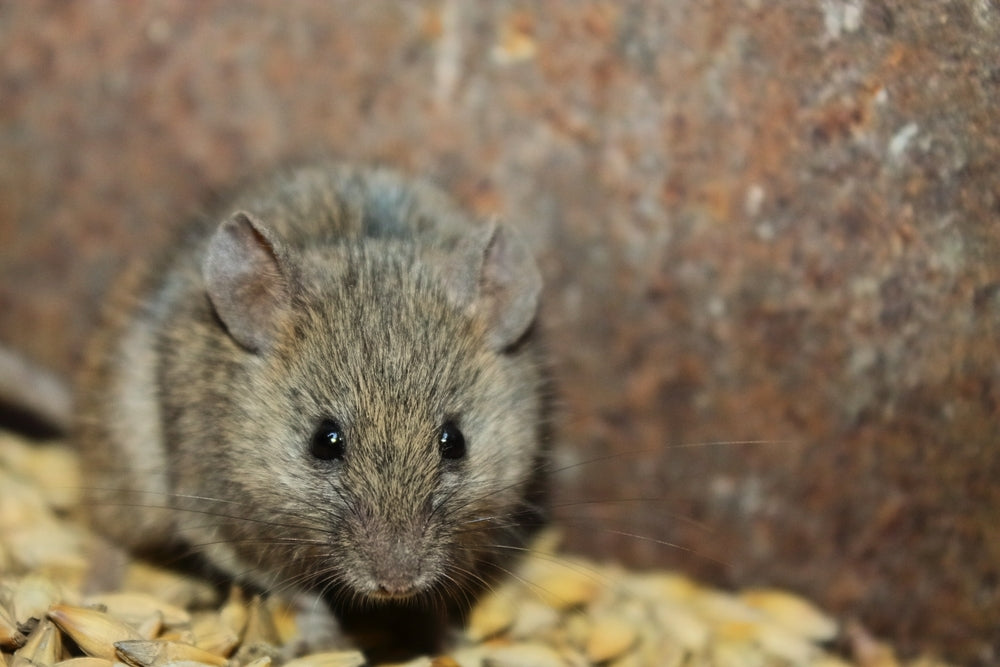Finding a mouse in your house might be worrying, but it’s actually more common than you might think! With the right knowledge and tools, you can successfully take control of the situation. By following the strategies and tips outlined in this guide and using Catchmaster®'s professional-grade mouse control products, you'll be well-equipped to catch mice effectively.
Ready to learn more about how to catch a mouse? Let’s get started!
How to Know When You Need to Trap a Mouse in Your House
Detecting the presence of mice early is crucial for effective control. Since mice are nocturnal creatures, they often go unnoticed until their population becomes a problem.
Here are some of the most common signs:
-
Droppings: Small, dark, rice-sized pellets found along walls, in cabinets, or near food sources are a clear indicator of mouse activity. Fresh droppings are dark and moist, while older ones are gray and dry.
-
Gnaw Marks: Mice have ever-growing incisors, which lead them to gnaw on various materials, including wood, plastic, and even electrical wires. Look for fresh, rough marks on surfaces or materials that show signs of recent damage.
-
Noises: Scratching or scurrying sounds in walls, ceilings, or under floors during the night often signal mouse activity. Mice are most active after dusk, so pay attention to these noises in the evening and at night.
-
Nests: Mice build nests from shredded paper, fabric, and other soft materials. These nests are typically hidden in dark, secluded areas, such as behind appliances, in attics, or within wall cavities.
-
Tracks and Smudge Marks: Mice tend to travel the same paths repeatedly, leaving behind oily smudge marks from their fur. You might also spot small footprints or tail marks in dusty areas.
-
Odors: A musky smell often accompanies a mouse infestation, particularly in enclosed spaces where droppings and urine accumulate.
When you notice these signs, it's time to take action. Identifying the extent of the infestation and understanding the common areas where mice are active will help you know how to trap a mouse effectively.
What Really Works: How to Catch a Mouse Successfully
To learn how to catch a mouse in the house, it's essential to understand your options! Catchmaster has been helping homeowners and professionals catch mice and other pests for over 70 years.
We offer a range of effective and easy-to-use solutions to help you resolve your mouse problem efficiently.
Here are the two different types of mouse traps for you to choose from.
Glue Traps
Glue traps, such as our Pro-Strength Mouse & Insect Glue Board Traps, are highly effective for catching mice and other pests. These traps are safe, non-toxic, and easy to use, making them ideal for homes with children and pets. Simply place them along walls, behind appliances, or in areas where you've noticed mouse activity.
Setting up your glue trap is easy! All of our traps come pre-baited, so you don’t have to add anything to them. Simply place it where you want it and keep the cover on for a few days to allow the mice to adjust to its presence. Then, after a few days, remove the cover to activate the glue trap and start catching mice.
Our glue traps are non-toxic and safe to use around children and pets. Pre-treated with AP&G’s legendary, non-toxic glue formula, they trap everything from mice and rodents to spiders and insects. You can choose from pre-scented or unscented options to fit your home’s unique needs.
Once your rodent trap catches a mouse or two, simply throw it away. It’s really that easy!
Snap Traps
For those who prefer a quick and efficient solution, Catchmaster’s Snapper Quick-Set Reusable Snap Traps and Instant Kill Mouse Snap Traps are excellent choices. These traps ensure a swift capture thanks to their high-efficiency design.
When choosing a rodent snap trap, simply apply your chosen bait and place the trap along walls where mice are active. The trap will do the rest!
Snap traps are a powerful option for quick and effective pest control. They are reusable, environmentally friendly, and can be used both indoors and outdoors.
Choosing the Right Mouse Trap for Effective Trapping
Both glue traps and snap traps have their pros and cons. When researching how to catch a mouse with a trap, several key factors should be considered.
First, think about the severity of your infestation. If you need to capture multiple mice, consider a multi-catch mouse trap. This type of trap can be used with or without a glue board to catch up to 12 mice with one trap. However, this particular trap works best indoors, so if your problem is outside, you may want to continue your search.
Speaking of trap placement, inside or outside plays a big role in the effectiveness of your chosen trap. If you need to catch a mouse in a dusty environment, larger glue trap trays are a better option than smaller glue traps.
For colder weather, choose a cold-weather glue trap. These traps can withstand temperatures as low as 0℉. The specialized glue formula makes it the ideal choice for damp, humid, or cold weather conditions.
Each method has its merits, and the best choice depends on the severity of the infestation, your comfort level with handling traps, and ethical considerations. Combining different methods often yields the best results, creating a comprehensive approach to mouse control.
Best Practices for Trapping Mice in Your House: Placement Tips
Understanding how to catch a tricky mouse also requires understanding how to use your mouse traps properly. Proper bait selection, strategic trap placement, and regular maintenance are key factors in successfully capturing mice. Here’s a detailed look at each of these strategies:
-
Bait Selection: If you decide to use a snap trap, choosing the right bait is important! Mice are typically attracted to high-protein foods, such as peanut butter, chocolate, or nuts. Using these foods as bait makes it more likely that you will catch the troublesome creatures.
-
Trap Placement: Position traps along walls, behind appliances, and in dark corners where mice are most likely to travel. Place traps perpendicular to the wall with the baited end closest to the wall. For best results, alternate Catchmaster’s snap traps and glue traps along walls to create a more sophisticated defense system against mice.
-
Regular Checks: Check traps daily to ensure they are still set and to remove any captured mice promptly. Regular checks prevent unpleasant odors and reduce the chance of mice escaping if they are only partially trapped.
-
Resetting Traps: While glue traps are disposable, snap traps can be reset. After disposing of a captured mouse, reset the trap with fresh bait and reposition it in the same area or another high-activity spot.
-
Relocate Traps: Sometimes tricky mice force us to learn how to catch a mouse that avoids traps. If you’re experiencing this problem, make it a habit to move your traps to different locations regularly. This will help catch more mice, as they tend to avoid areas where traps have been set previously.
-
Allow a Few Days for the Mice to Get Familiar: Mice can be extremely sensitive to new elements in their environment, so if the mice are avoiding your trap, consider leaving it out for a few days without removing the protective paper over the glue trap portion. Once they’re familiar and comfortable with the new addition, remove the paper and wait for the glue to trap them.
-
Avoid Transferring Your Scent to the Trap: When handling traps, use gloves to prevent transferring your scent, which can deter mice.
-
Experiment with Bait: If you’re using snap traps, you can experiment with different types of baits to see which type of bait mice like the most. However, only try this if you are using snap traps. Adding bait to a glue trap will decrease the effectiveness of the glue.
-
Be Patient and Persistent: It may take some time to see results, but with consistent effort, you'll be able to control your mouse problem effectively.
Of all these tips, regularly checking and resetting traps is probably the most crucial for maintaining control over the infestation and preventing future problems. With these best practices in mind, you can maximize the effectiveness of your mouse traps and ensure a more efficient mouse control process.
Mistakes to Avoid When Trapping Mice for Better Results
Setting your mouse traps is just the beginning. To ensure continued success and a mouse-free home, avoid these mouse-catching mistakes:
-
Not Checking Your Traps Daily: Inspect your traps every day to see if any mice have been caught. The sooner you remove a caught mouse, the better, as it prevents odors and the attraction of other pests.
-
Improperly Disposing of Caught Mice: When disposing of a caught mouse, use gloves or a plastic bag to remove it from the trap. Seal everything in a bag before disposing of it in an outdoor trash bin.
-
Neglecting to Reset or Replace the Trap: If using a single-use glue and snap traps, dispose of them along with the mouse. If it's a reusable snap trap, reset it with fresh bait.
-
Allowing Traps to Get Dirty: Regularly clean your reusable traps with soap and water to maintain their effectiveness and prevent the buildup of odors or bacteria. If you are using glue traps, dispose of them if dust and debris have affected their ability to trap mice successfully.
Perhaps the biggest mistake that people make when utilizing mouse traps is neglecting to monitor them for dust or varying weather conditions. When you stay on top of these tasks, you ensure the ongoing effectiveness of your traps, as well as their ability to help you maintain a clean, rodent-free environment in your home.
Effective Mouse Control with Catchmaster’s Proven Solutions
Setting a mousetrap correctly is essential for achieving a mouse-free home.
At Catchmaster, we're committed to providing you with the highest quality mouse traps and the expertise you need to use them effectively.
Visit our mouse trap collection to explore our full range of solutions and find the perfect trap for your needs.





